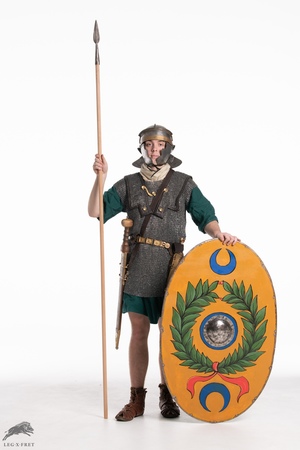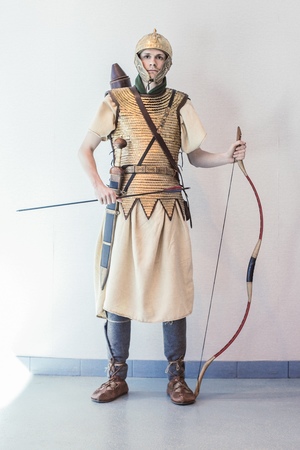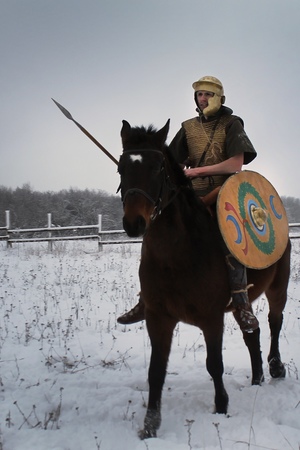Auxilia
Auxilia (Latin: auxilia) were auxiliary units of the ancient Roman army, recruited partly from vassal and allied peoples and partly from foreign mercenaries. An auxiliarius was a warrior serving in such a unit.
During the Roman Republic, auxilia were composed of individuals from subject peoples of Rome who did not possess Roman citizenship and were not counted among the allies. The auxilia were raised through recruitment or mandatory conscription from the aforementioned peoples. It is important to note that these soldiers were not part of the legions but formed separate units, with varying numbers and organization. The auxilia included, for example, Cretan archers, Balearic slingers, and Gallic cavalry.
Under Emperor Augustus, a reform of the auxilia took place, providing them with new weapons and equipment, and they were organized into cohorts of 500 soldiers and milliary units. At that time, the length of service was 25 years (16 years in the Praetorian Guard and 20 years in the legion), and while service may have been voluntary, upon completion, the soldiers received Roman citizenship rights. During Trajan's reign, the old auxilia units were replaced with new formations. Auxiliary forces were typically replenished in the provinces where they were stationed.
The most common types of auxilia troops included:
- Hastati (spearmen)
- Sagittarii (archers)
- Equites (light cavalry)
Related topics
Legion, Roman Republic, Auxilary-hastat, Auxiliary-horseman, Sagittarius
Literature
- Military Encyclopedia / Edited by V. F. Novitsky et al., St. Petersburg: I. V. Sytin Publishing House, 1911-1915, vol. 3.
- Kovalev S. I. Istoriya Rima [History of Rome]. Chapter 2. The Principate of August.





